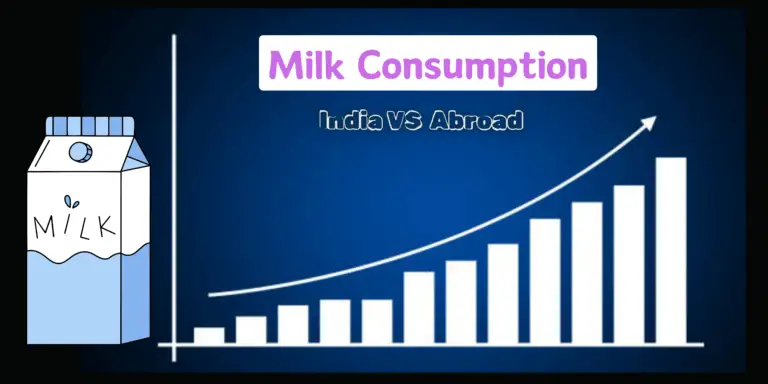Introduction
Milk, a staple in diets worldwide, holds significant cultural, nutritional, and economic value.
Its consumption patterns vary across regions, influenced by factors such as dietary habits, economic development, and agricultural practices.
In this article, we delve into the contrasting landscapes of milk consumption in India and abroad, supported by recent statistics and data.
Milk Consumption in India
India, known as the world’s largest producer and consumer of milk, has seen a steady increase in domestic milk consumption.
As of 2023, the total domestic consumption volume of milk was over 207 million metric tons.
The total milk production in the country during 2021–22 was 221.06 million tonnes.
The per-capita availability of milk in India was 444 grams/day during 2021–22.
Global Milk Consumption
When we look at the global stage, the patterns of milk consumption vary widely.
Belarus had the highest per capita consumption of fluid milk in 2022.
Contrastingly, in many Western countries, milk consumption patterns exhibit distinct characteristics shaped by socioeconomic factors, dietary trends, and cultural preferences.
For instance, in the United States, milk consumption has been declining over the past few decades, influenced by factors such as the rise of plant-based milk alternatives, health concerns, and changing consumer preferences.
According to data from the U.S. Department of Agriculture (USDA), per capita milk consumption in the United States has seen a steady decline, with the average American consuming approximately 146 pounds (around 66 kilograms) of fluid milk per year in 2023, down from around 247 pounds (around 112 kilograms) in 1975.
Similarly, in European countries like Germany and France, while dairy consumption remains relatively high, there is a growing trend towards alternative milk products such as soy milk, almond milk, and oat milk.
This shift is driven by factors like lactose intolerance, ethical concerns, and environmental sustainability.
Global Trends and Future Projections
Despite variations in milk consumption patterns across regions, global demand for dairy products continues to rise steadily.
According to projections by the International Dairy Federation (IDF), global milk production is expected to increase by an average annual growth rate of 1.7% over the next decade, driven by population growth, rising incomes, and urbanization.
Furthermore, advancements in technology and dairy farming practices are anticipated to enhance productivity and efficiency in milk production, ensuring a steady supply to meet growing demand.
Conclusion
Milk consumption patterns in India and across the globe are influenced by many factors, including cultural preferences, dietary habits, and economic conditions.
As the world continues to globalize and diets evolve, these patterns may undergo significant changes.
Understanding these trends can provide valuable insights for policymakers, researchers, and the dairy industry at large.
